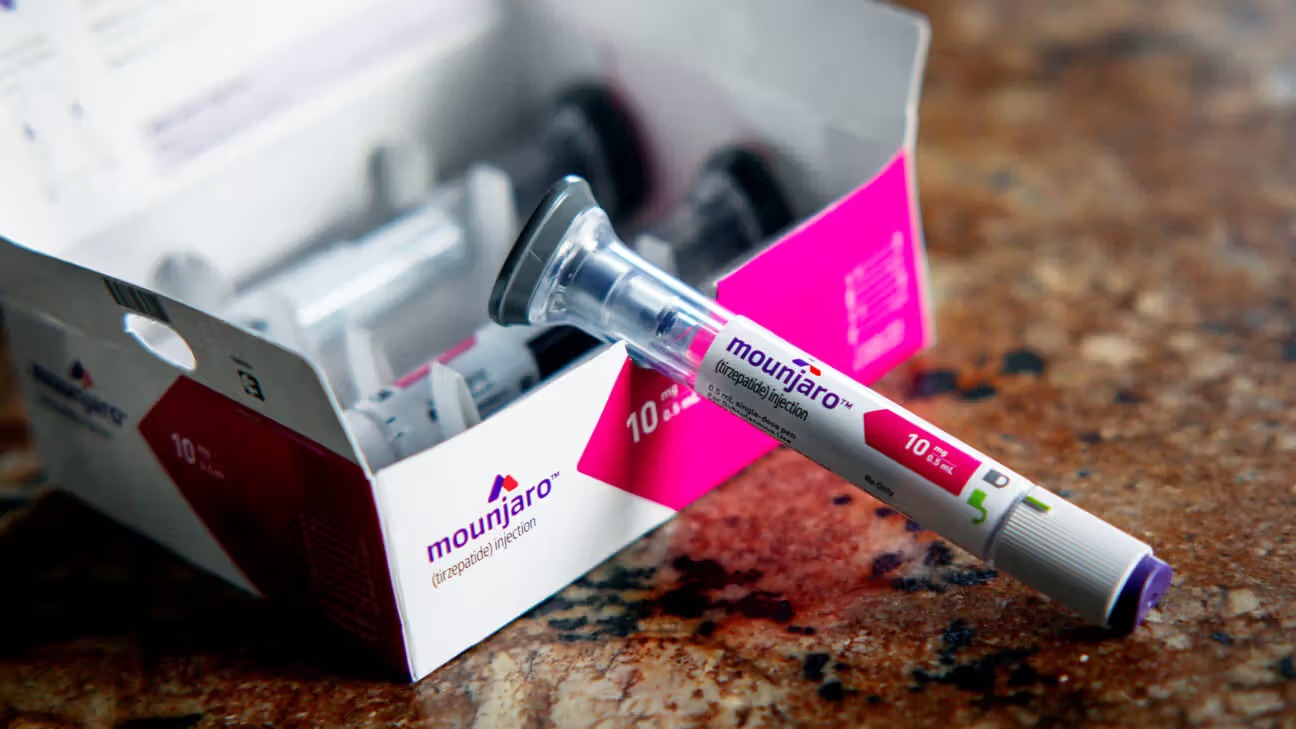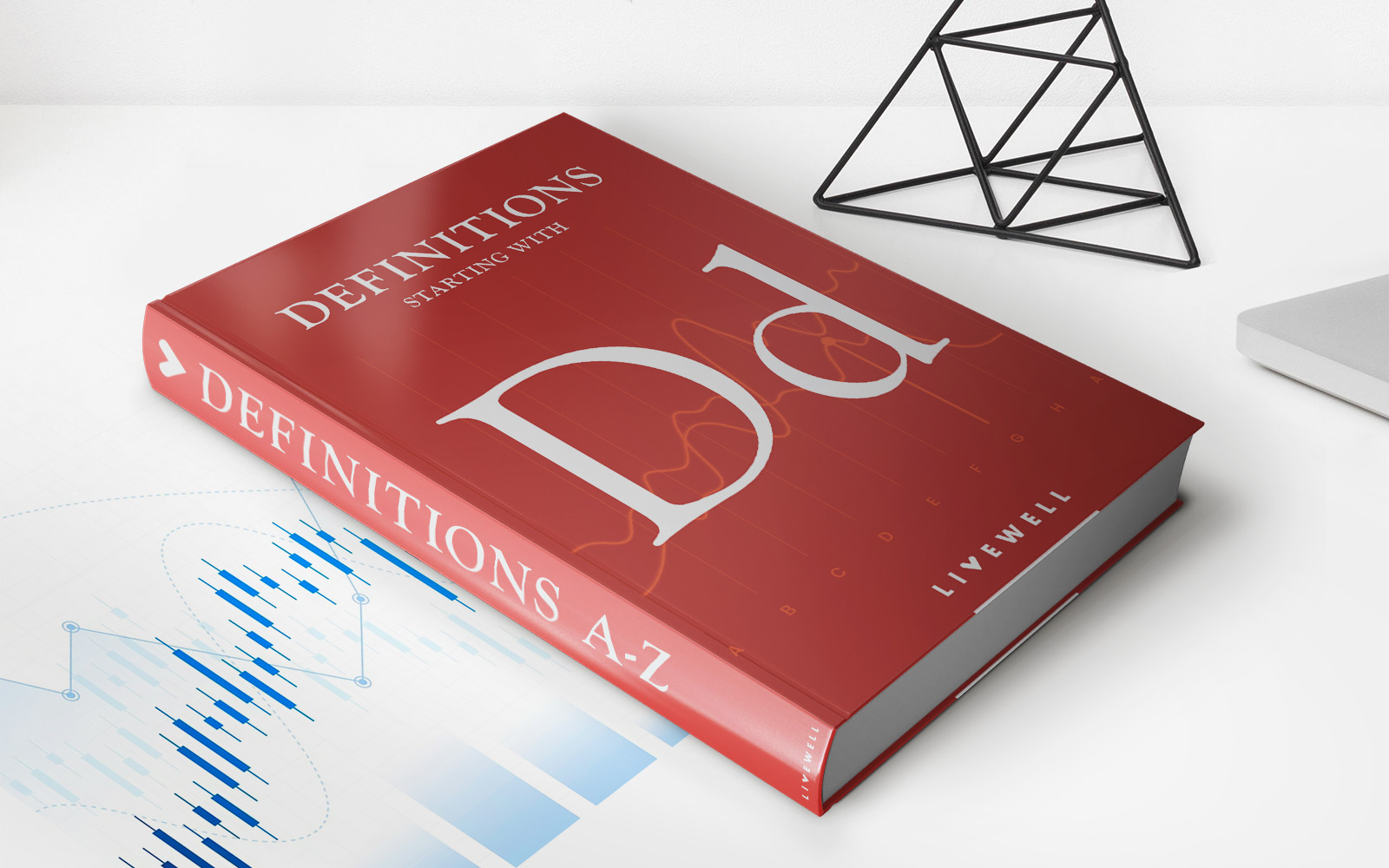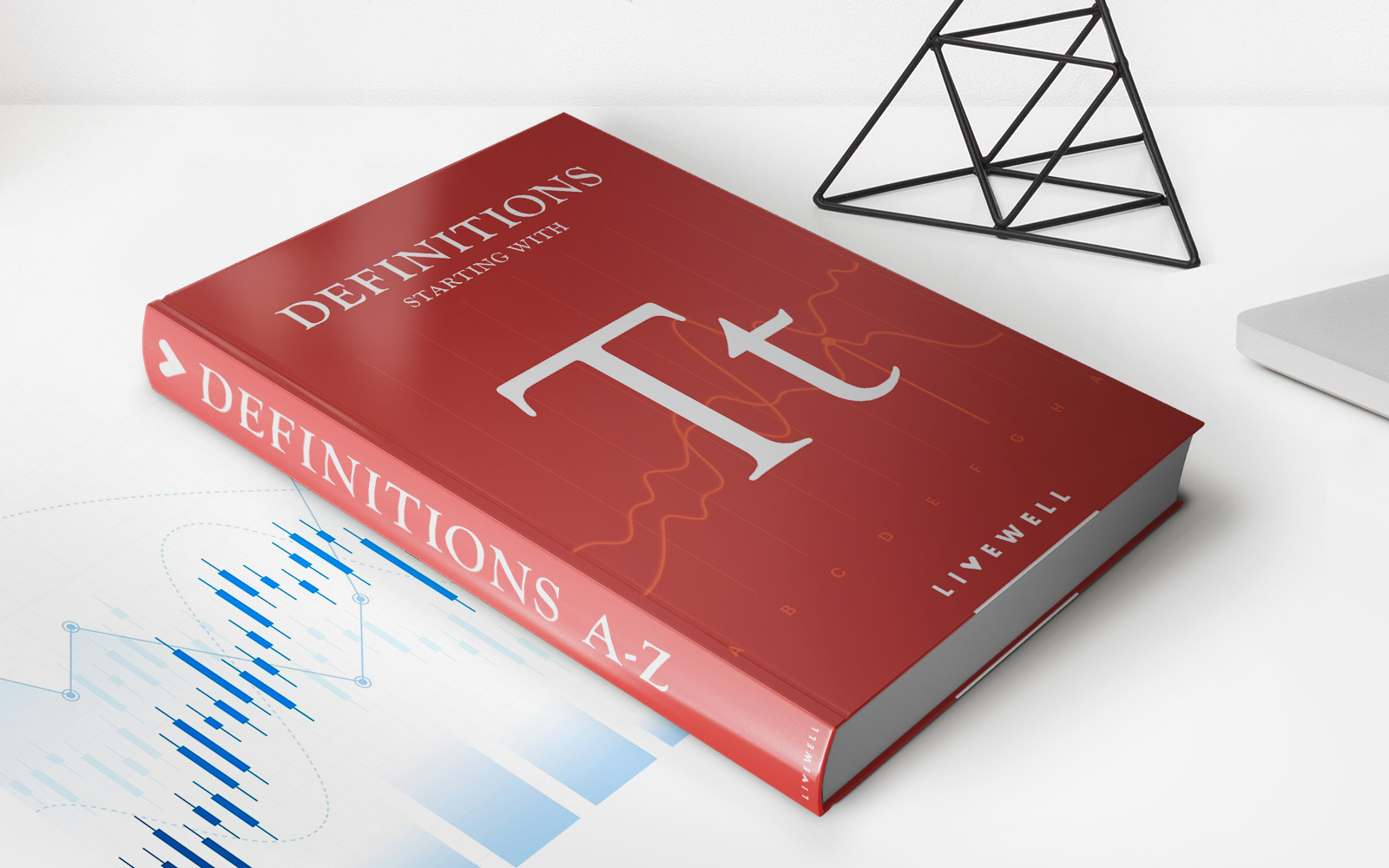

Finance
What Is Covered Security
Modified: February 23, 2024
Learn about covered security in the finance industry and how it can protect your investments. Find out what it means for your financial security.
(Many of the links in this article redirect to a specific reviewed product. Your purchase of these products through affiliate links helps to generate commission for LiveWell, at no extra cost. Learn more)
Table of Contents
Introduction
In the world of finance, the concept of covered security is of utmost importance. Understanding what a covered security is and its implications is crucial for investors, regulators, and financial institutions. In this article, we will delve into the definition of covered security, explore its types, discuss the regulatory bodies and laws governing covered securities, highlight the benefits and risks associated with them, and shed light on the compliance requirements.
A covered security refers to a financial instrument that meets specific criteria and is subject to certain regulatory requirements. The term “covered” signifies that these securities are protected by certain laws and regulations aimed at ensuring transparency and integrity in the financial market.
These securities are categorized and regulated by different governing bodies, which vary by jurisdiction. Understanding the different types of covered securities and their respective regulations is essential for investors seeking to make informed decisions and for regulators monitoring the financial markets.
While covered securities enjoy certain benefits and protections, they also come with inherent risks that investors need to be aware of. Compliance requirements play a crucial role in maintaining the integrity of these securities and safeguarding the interests of investors.
In the following sections, we will explore the various aspects of covered securities, including their definition, types, regulatory bodies, benefits, risks, and compliance requirements. It is important to gain a comprehensive understanding of these topics to navigate the world of finance effectively and make informed investment decisions.
Definition of Covered Security
A covered security is a financial instrument that meets specific criteria and is subject to certain regulatory requirements. These criteria are determined by governing bodies and may vary depending on the jurisdiction. The term “covered” indicates that these securities are protected by laws and regulations aimed at ensuring fair and transparent trading practices.
The specific definition of a covered security can vary, but generally, it includes instruments such as stocks, bonds, and mutual funds that are traded in regulated and transparent markets. These securities are typically issued by large, well-established companies and government entities, offering a higher level of perceived security and lower risk compared to other types of securities.
The designation of a security as “covered” is important because it determines the regulatory framework within which it operates. Covered securities are subject to specific disclosure requirements, trading restrictions, and reporting obligations to ensure transparency and investor protection. These regulations help maintain market integrity and minimize the risk of fraudulent activities.
Additionally, the classification of a security as covered can also impact its eligibility for certain tax advantages or exemptions. This can have significant implications for investors, as it may affect their investment strategies and tax planning.
It is crucial for investors, financial institutions, and regulators to understand the definition of covered securities and the specific criteria that need to be met for a security to be classified as covered. This understanding ensures compliance with applicable laws and regulations and allows for informed decision-making in the financial markets.
Types of Covered Securities
Covered securities encompass a wide range of financial instruments. Understanding the different types of covered securities is essential for investors, as it provides insight into the various investment options available in the market. Here are some common types of covered securities:
- Common Stocks: Common stocks represent ownership in a corporation and are one of the most well-known types of covered securities. They provide investors with voting rights and the potential for dividends and capital appreciation.
- Preferred Stocks: Preferred stocks are another type of ownership in a corporation. They typically offer a fixed dividend payment and have a higher claim on the company’s assets compared to common stocks. Preferred stocks may also have certain characteristics such as convertibility or cumulative dividends.
- Bonds: Bonds are debt securities issued by governments, municipalities, and corporations. They represent a loan that investors provide to the issuer in exchange for periodic interest payments and the return of the principal amount at maturity. Bonds are usually classified as covered securities due to their widespread availability and regulation.
- Mutual Funds: Mutual funds pool money from multiple investors to invest in a diversified portfolio of securities. These funds are managed by professional investment firms and provide investors with a convenient way to access a wide range of covered securities.
- Exchange-Traded Funds (ETFs): ETFs are similar to mutual funds but trade on stock exchanges like individual stocks. They offer investors the opportunity to gain exposure to a specific market index or sector while enjoying the benefits of diversification and liquidity.
- Convertible Securities: Convertible securities are hybrid instruments that can be converted into a different form of security, typically common stock, at the option of the holder. These securities provide investors with the potential for both fixed-income returns and equity participation.
These are just a few examples of the types of covered securities available in the market. It’s important to note that the specific types and classifications may vary depending on the jurisdiction and the regulations implemented by governing bodies. Investors should assess their risk tolerance, investment goals, and market conditions to choose the most suitable types of covered securities that align with their financial objectives.
Securities Exempted from Coverage
While covered securities are subject to specific regulations and requirements, there are certain securities that are exempted from coverage. These exempted securities may not meet the criteria set forth by regulatory bodies or may fall under specific exemptions due to their unique characteristics. Here are some examples of securities that are typically exempted from coverage:
- Private Placements: Private placements involve the sale of securities to a limited number of sophisticated investors or institutions, often without the need for full public disclosure. Since these securities are sold in a private offering, they may be exempt from the regulations that apply to covered securities.
- Government Securities: Securities issued by government entities, such as treasury bonds and bills, are often exempt from coverage. These securities are typically backed by the full faith and credit of the government, making them inherently secure.
- Municipal Securities: Municipal securities, also known as municipal bonds, are debt obligations issued by state and local governments to finance public projects. These securities may be exempt from coverage depending on the specific regulations applicable to municipal securities.
- Small Offerings: Small offerings, also known as Regulation A offerings, are exempt from coverage under certain conditions. These offerings allow companies to raise capital from a larger pool of investors without requiring full registration as required for covered securities.
- Options and Futures Contracts: Options and futures contracts, which represent agreements to buy or sell a specific asset at a predetermined price and time in the future, are typically exempt from coverage. These derivatives fall under separate regulatory frameworks.
- Certain Insurance Products: Certain insurance products, such as variable annuities and certain insurance contracts, may be exempt from coverage due to their unique nature and the regulations specific to the insurance industry.
It’s important to note that the exemptions and regulations surrounding securities can vary depending on the jurisdiction and the specific laws implemented by governing bodies. Additionally, exempted securities may still be subject to other regulatory requirements aimed at protecting investors and maintaining market integrity.
Investors should be aware of the exemptions applicable to different securities and consult with financial professionals or legal advisors to ensure compliance with relevant regulations and to understand the risks associated with exempted securities.
Regulatory Bodies and Laws Governing Covered Securities
Covered securities are subject to regulation by various governing bodies and laws to ensure transparency, integrity, and investor protection in the financial markets. These regulatory bodies and laws vary across jurisdictions. Let’s take a look at some of the key regulatory bodies and laws that govern covered securities:
- Securities and Exchange Commission (SEC): In the United States, the Securities and Exchange Commission (SEC) is the primary regulatory body responsible for overseeing the securities industry and enforcing federal securities laws. The SEC’s main objective is to protect investors and maintain fair and efficient markets. It regulates the registration, disclosure, trading, and reporting requirements for covered securities.
- Financial Industry Regulatory Authority (FINRA): FINRA is a self-regulatory organization that oversees brokerage firms and their registered representatives in the United States. It enforces rules and regulations related to the conduct of broker-dealers and aims to protect investors and maintain market integrity.
- European Securities and Markets Authority (ESMA): ESMA is an independent EU authority that regulates the European securities market. It harmonizes the regulation of covered securities across EU member states and provides guidelines on disclosure requirements, investor protection, and market transparency.
- Financial Conduct Authority (FCA): The FCA is the regulatory body responsible for the supervision of the financial markets in the United Kingdom. It sets the regulatory framework for covered securities, including rules on market conduct, disclosure requirements, and investor protection.
- Canadian Securities Administrators (CSA): The CSA is an umbrella organization that coordinates and harmonizes the regulation of Canadian capital markets across various provinces and territories. It ensures that covered securities comply with applicable securities laws and investor protection regulations.
- Australian Securities and Investments Commission (ASIC): ASIC is the regulatory body responsible for overseeing Australia’s financial markets. It administers and enforces the laws governing covered securities to maintain market integrity and protect investors.
In addition to these regulatory bodies, there are various laws and regulations specific to each jurisdiction that govern covered securities. For example, in the United States, the Securities Act of 1933 and the Securities Exchange Act of 1934 (and its amendments) are the primary federal laws regulating covered securities. These acts cover areas such as registration, disclosure, reporting, and anti-fraud provisions.
It is essential for investors, financial institutions, and market participants to stay informed about the regulatory bodies and laws governing covered securities in their respective jurisdictions. Adhering to these regulations helps maintain market integrity, protect investors, and facilitate fair and efficient trading in the financial markets.
Benefits of Covered Security
Covered securities offer several benefits that make them an attractive investment option for individuals and institutions. These benefits stem from the regulations and protections in place for these securities. Let’s explore some of the key advantages of investing in covered securities:
- Investor Protection: Covered securities are subject to regulations and disclosure requirements that aim to protect investors. This includes providing accurate and timely information about the issuer, ensuring fair trading practices, and preventing fraudulent activities. The regulatory framework helps instill confidence and trust in the market, making covered securities a more secure investment option.
- Market Transparency: The regulations governing covered securities promote transparency in the financial markets. Companies issuing covered securities are required to disclose relevant information, such as financial statements, business operations, and risks. This transparency allows investors to make informed decisions based on reliable information, reducing informational asymmetry and promoting more efficient markets.
- Liquidity: Covered securities are typically traded in well-established, regulated markets, which enhances their liquidity. Investors can easily buy or sell these securities, ensuring they have the ability to convert their investments into cash when needed. This liquidity makes covered securities more attractive, especially for investors seeking flexibility in their investment portfolios.
- Diversification: Covered securities offer investors a wide range of options for diversifying their portfolios. These securities span various industries, sectors, and regions, allowing investors to spread their risks and potentially enhance their returns. Diversification helps reduce the impact of individual security or sector-specific risks and promotes overall portfolio stability.
- Potential for Returns: Covered securities, particularly stocks and bonds, offer the potential for capital appreciation and income generation. Stocks can provide investors with dividends and capital gains, while bonds offer fixed interest payments. By carefully selecting a mix of covered securities, investors can seek to optimize their potential returns based on their risk appetite and investment goals.
- Regulatory Oversight: Covered securities are subject to regulatory oversight by governing bodies. This oversight helps maintain market integrity by ensuring compliance with securities laws and regulations. It also provides a mechanism for resolving disputes and addressing any potential market abuses. The regulatory framework enhances investor confidence and contributes to the overall stability and credibility of the financial markets.
Overall, the benefits of covered securities make them appealing to investors looking for a combination of stability, transparency, and potential returns. These securities provide a regulated and protected investment environment, fostering confidence and trust in the market.
Risks Associated with Covered Security
While covered securities offer numerous benefits, it is essential for investors to be aware of the risks associated with investing in them. Understanding these risks can help investors make informed decisions and manage their portfolios effectively. Here are some key risks to consider when investing in covered securities:
- Market Risk: Covered securities are subject to market fluctuations, which can impact their value. Factors such as economic conditions, industry trends, geopolitical events, and investor sentiment can all contribute to market volatility. Investors should be prepared for the possibility of price fluctuations and potential losses.
- Interest Rate Risk: For fixed income securities such as bonds, changes in interest rates can affect their value. When interest rates rise, bond prices tend to fall, and vice versa. Investors holding fixed income covered securities should be aware of the potential impact that interest rate movements can have on their investment returns.
- Credit Risk: Covered securities issued by corporations or governments are subject to credit risk. There is always the possibility that the issuer may default on its obligations, resulting in the loss of principal or interest payments. Investors should assess the creditworthiness of the issuer and diversify their holdings to mitigate credit risk.
- Liquidity Risk: While covered securities generally offer liquidity, there may be instances when certain securities become less liquid. This can occur during periods of market stress or when there is limited trading activity in a specific security. Investors may face challenges when trying to sell the security at a desired price, potentially resulting in losses or the inability to exit a position.
- Regulatory Risk: The regulations governing covered securities can change over time. New laws or regulatory actions can impact the market, investor protections, and the profitability of certain investments. Investors should stay informed about changes in regulations and be prepared to adapt their strategies accordingly.
- Company-Specific Risks: Investing in individual stocks carries company-specific risks. These risks can include poor management decisions, competitive pressures, product failures, or legal and regulatory issues. Investors should conduct thorough research and analysis of individual companies before investing in their securities.
- Market Liquidity Risk: In times of market stress or during extreme market conditions, overall market liquidity can dry up. This can make it challenging to buy or sell covered securities at desired prices. Investors should consider the potential impact of reduced market liquidity and have contingency plans in place.
It’s important for investors to carefully assess their risk tolerance, diversify their portfolios, and conduct due diligence when investing in covered securities. By understanding the risks associated with these securities, investors can make informed decisions and take appropriate measures to manage and mitigate potential risks.
Compliance Requirements for Covered Securities
Covered securities are subject to various compliance requirements to ensure transparency, fair trading practices, and investor protection. These requirements are put in place by regulatory bodies and may vary depending on the jurisdiction. Let’s explore some of the key compliance requirements for covered securities:
- Registration: Covered securities are typically required to be registered with the relevant regulatory authorities. This process involves providing detailed information about the security, including its issuer, financial statements, business operations, and associated risks. Registration ensures that the security meets the necessary disclosure requirements before it is made available to the public.
- Disclosure: Covered securities come with specific disclosure requirements to provide investors with relevant information for making informed investment decisions. Issuers are obligated to disclose financial results, material events, risk factors, and other pertinent information to the investing public. This helps ensure transparency and reduces information asymmetry.
- Reporting: Companies issuing covered securities are required to provide regular updates and reports to regulatory bodies and investors. This includes financial reports, quarterly disclosures, annual reports, and other mandated filings. These reports help investors stay informed about the financial health and performance of the issuer.
- Trading Restrictions: Certain covered securities may come with trading restrictions, such as lock-up periods or insider trading restrictions. Lock-up periods prevent early investors or company insiders from selling their stakes immediately after an initial public offering (IPO), ensuring a more stable market. Insider trading restrictions prohibit individuals with access to non-public information from trading securities based on that information.
- Anti-Money Laundering (AML) and Know Your Customer (KYC) Requirements: Financial institutions and intermediaries dealing with covered securities are required to comply with anti-money laundering regulations and have robust know-your-customer procedures in place. These requirements aim to prevent money laundering, terrorist financing, and other illicit financial activities.
- Market Manipulation and Fraud Prevention: Regulatory bodies enforce regulations to prevent market manipulation and fraudulent activities related to covered securities. Market abuse, insider trading, false disclosures, and other fraudulent practices are strictly monitored and subject to severe penalties.
- Best Execution: Financial intermediaries involved in executing trades for covered securities are required to abide by best execution standards. This means they must strive to obtain the best possible execution prices for their clients’ orders, considering factors such as price, speed, costs, and likelihood of execution.
It is crucial for market participants, including issuers, investors, and financial intermediaries, to adhere to these compliance requirements to maintain market integrity, protect investors, and ensure a fair and transparent trading environment for covered securities.
Market participants should stay updated with any changes or updates to compliance requirements, as regulations can evolve over time. Compliance with these requirements not only safeguards investors’ interests but also helps to maintain trust and confidence in the financial markets.
Conclusion
Covered securities play a vital role in the world of finance, offering investors a regulated and protected investment environment. Understanding the definition, types, regulatory bodies, benefits, risks, and compliance requirements associated with covered securities is essential for navigating the financial markets effectively.
By meeting specific criteria and being subject to regulatory oversight, covered securities provide investors with a range of benefits. These benefits include investor protection, market transparency, liquidity, diversification opportunities, potential returns, and regulatory oversight. Covered securities offer a sense of security and confidence, making them an attractive investment option for individuals and institutions.
However, it is important to consider the risks associated with covered securities. Market risk, interest rate risk, credit risk, liquidity risk, regulatory risk, company-specific risks, and market liquidity risk are some of the risks that investors should be mindful of. Understanding these risks helps investors make informed investment decisions and manage their portfolios effectively.
Compliance requirements play a crucial role in maintaining the integrity of covered securities. These requirements include registration, disclosure, reporting, trading restrictions, AML and KYC procedures, anti-fraud measures, and best execution standards. Adhering to these compliance requirements ensures transparency, prevents market manipulation, and protects investors’ interests.
In conclusion, covered securities provide investors with opportunities for growth, income, and diversification, while also offering regulatory protections. However, investors must assess their risk tolerance, conduct thorough research, and stay informed about market developments and changing compliance requirements. By doing so, investors can make informed decisions, mitigate risks, and capitalize on the benefits that covered securities have to offer.














